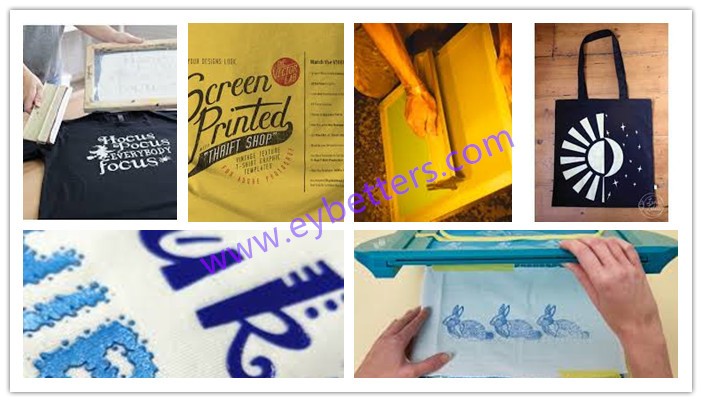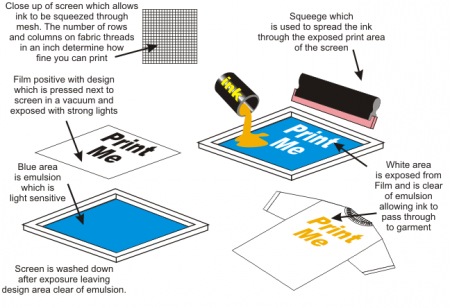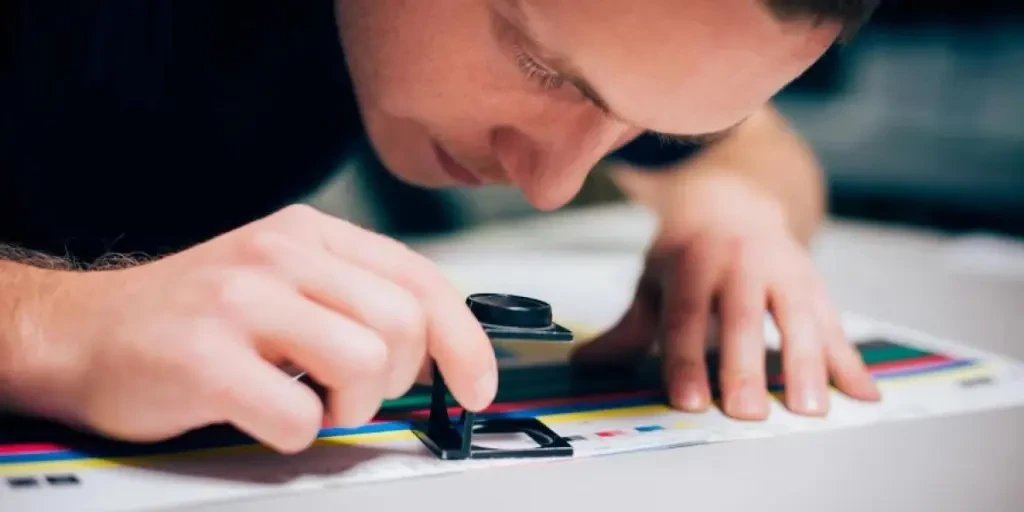The Best Strategy To Use For Tx Tees
The Best Strategy To Use For Tx Tees
Blog Article
The 9-Second Trick For Tx Tees
Table of ContentsAn Unbiased View of Tx TeesSee This Report on Tx TeesFacts About Tx Tees UncoveredHow Tx Tees can Save You Time, Stress, and Money.The Buzz on Tx TeesTx Tees Can Be Fun For AnyoneTx Tees Fundamentals Explained
Add up other prices, like the number of utilities it takes to run the store and the cost of ink and emulsion per layout. Take the print listed below.The emulsion should just be a few cents since you 'd just need to layer one display for this job. Exactly how much should you charge per shirt to make a profit? Typically, printers attempt to make up to 45% earnings on a print work. Below's a table to aid you determine that: overall price per product percent of wanted earnings as a decimal (instance:.25 or.45) revenue made per thing per job Currently allowed's talk concerning the productivity of DTF.

With DTF, you can publish a handful of shirts, or simply one. Both display printing and DTF have their particular niches in the globe.
The Main Principles Of Tx Tees
The best method to know? Ask about and see what print stores like yours are doing. screen printer. Try both out and see which you like far better
When you're selecting what type of printing method to make use of for printing your art work designs on your garments, it is very important that you understand the distinctions between these two strategies so you can take full advantage of results while minimizing expenses. Display printing is the most generally used method for printing styles on textiles.
DTG printing is likewise called place or straight to garment printing due to the fact that it publishes only what is required as opposed to making a display as display printers do. https://forums.hostsearch.com/member.php?258490-txtees02&tab=aboutme&simple=1. Screen printing functions by screen filler squeegee display printing ink screen mesh display, then moving the picture to garment using warmth and/or pressure
The DTG printer makes use of special dye-sublimation inks that are used into a pre-designed photo by a digital printing system. The inks become component of the fabric, enabling dynamic shades and outstanding detail. It's likewise called area or direct to garment printing since it publishes only what is required as opposed to making a screen as display printers do.
The Facts About Tx Tees Revealed
It's much faster - you can publish a fullcolor photo in minutes, as opposed to hours for screen printing. Second, there's no set up time or prices entailed - you can print any style you like, without needing to develop a display initially. Third, there's no waste - due to the fact that display printers display print one design at a time, they have to screen each color separately.
The paper is extremely costly and can only be utilized when. Once it's published on, it needs to be thrown out. - The first acquisition rate is less than the ahead of time financial investment of DTG printers- You can publish multi-color styles one screen each time instead of having to print each shade independently like DTG printing.

Indicators on Tx Tees You Should Know
Nevertheless, rather of using display mesh as screen printers do, color sublimation printers use laser modern technology to move your images onto garments or paper. A heat process moves the color from its solid-state straight into the gas phase which subsequently fuses it onto fabric substrates when they are quickly heated up to high temperature levels under high pressure.
Sublimation printing is environment-friendly. It makes use of much less water than screenprinting, and because it doesn't include making use of harmful solvents, it's risk-free for all types of clothing. The color sublimation inks are additionally odorless when cured, unlike screen printers that utilize dangerous chemicals throughout the display printing procedure that leave an undesirable odor.
They also save money on costly equipment like exposure units because dye sublimation printers don't need a UV direct exposure system or a flash remedy stove that is normally made use of in display printing (custom cap printing). What is direct to garment printing (DTG Printing)? DTG printing is a digital screenprinting process that prints straight onto textile making use of specialized inkjet printers
The Greatest Guide To Tx Tees
DTG printing offers several benefits over conventional screenprinting, including the capacity to publish photographic quality photos, higher shade vibrancy, and the capability to print layouts on darker materials. DTG printers work by warming the textile ink till it transforms into a gas. The gas after that permeates the textile, bonding with the fibers to produce a permanent print.

Display printers merely prepare their display after that begin printing up until they run out of product or ink.- There is a wide variety of experienced screen printers throughout the globe, which can be useful for novices. - It's a slower process - screen printers typically have to wait for the ink to completely dry prior to they can publish the next color- Screen printers call for manual work, so there's a greater discovering curve and it takes longer to produce a top quality design- Display printing isn't as exact as DTG printing, so you might get some "bleeding" of shades from one component of the image onto another otherwise done correctly.
4 Simple Techniques For Tx Tees
Rather of using display mesh as screen printers do, color sublimation printers use laser innovation to move your pictures onto garments or paper. A warmth process moves the dye from its solid-state directly right into the gas phase which subsequently fuses it onto material substratums when they are quickly warmed to high temperatures under high pressure.
Sublimation printing is eco-friendly. It utilizes less water than screenprinting, and due to the fact that it doesn't include using damaging solvents, it's secure for all types of clothing. The color sublimation inks are also odor-free when healed, unlike screen printers that utilize unsafe chemicals during the screen printing procedure that leave an unpleasant odor.
They likewise save money on expensive tools like exposure units given that color sublimation printers do not require a UV exposure system or a flash cure stove that is generally utilized in display printing. What is straight to garment printing (DTG Printing)? DTG printing is an electronic screenprinting process that prints directly onto material utilizing specialized inkjet printers.
Getting The Tx Tees To Work
DTG printing uses lots of advantages over standard screenprinting, including the ability to print photo top quality photos, better shade vibrancy, and the capability to print designs on news darker textiles. DTG printers function by heating the fabric ink till it develops into a gas. The gas after that permeates the textile, bonding with the fibers to create a permanent print.
Report this page